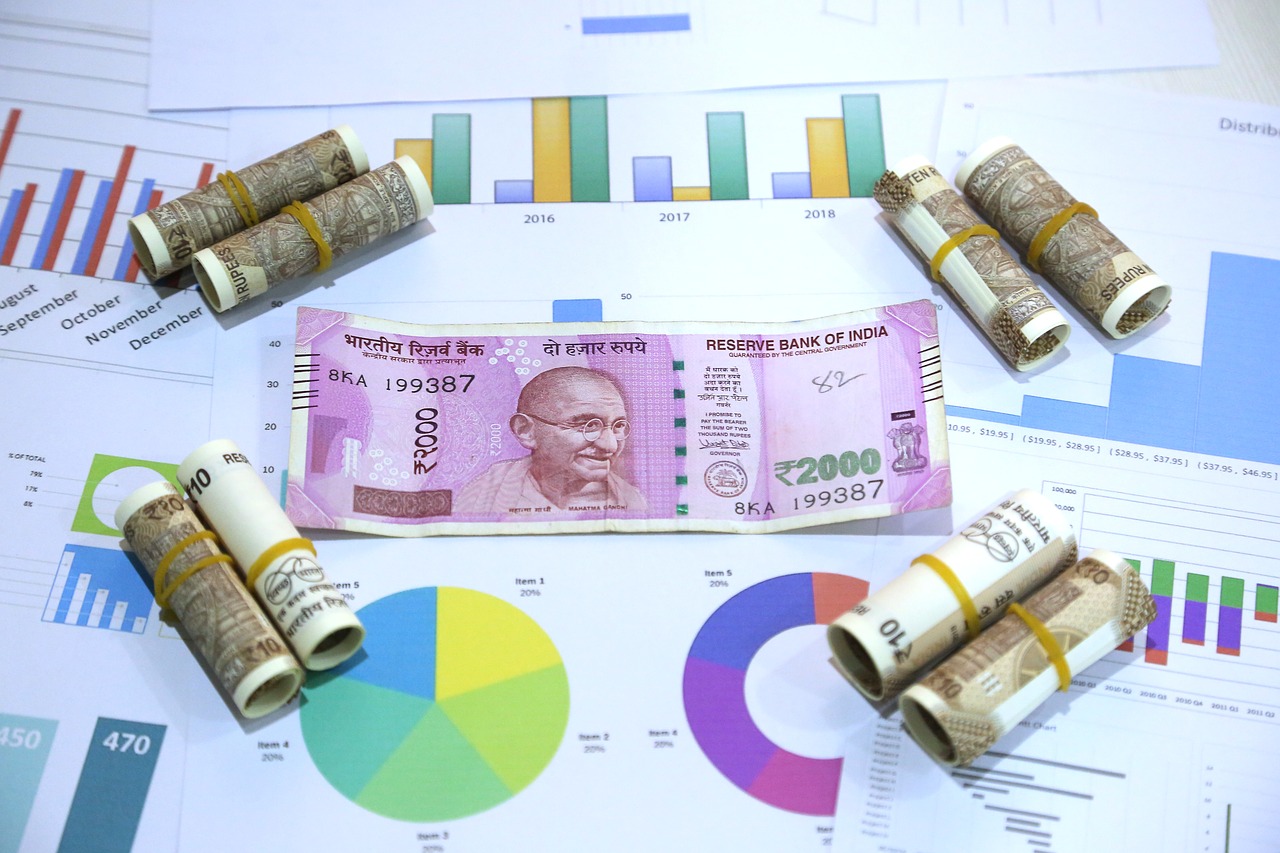In the absence of any spending by industry or consumers, the government wants to say that it is now spending in their place. But many spending allocations in the budget seem opaque when analysed by sector. This year too, there was some smart wordplay and marketing wizardry at play.
Now that a couple of days have passed since the budget speech, one can look back at the speech, its annexures and the 900-page Annual Economic Survey. Despite all the market’s good cheer, there isn’t much to celebrate – at least for the common man. There is good cheer for industry doyens and the small minority who actually work in India’s formal economy. But for most of us, the budget – this year too – was some smart wordplay and marketing wizardry at play.
Consider the phrase “social security benefits will extend to gig and platform workers”. Perhaps, for the government, this ‘gig economy’ thing might be new, but for the vast majority of India, there is, in fact, nothing new about the gig economy at all. Nearly all labour is ‘gig’ – that is, informal and unsupported by any formal form of employment and without any social security. This is what made ideas like the National Rural Employment Guarantee Scheme (MNREGA) revolutionary – a safety-net for everyone, regardless of where, by what employment structure, and by whom they were employed. But despite its proclamation, the budget contained no specifics on how ‘welfare’ is going to make it to gig-economy workers.
Then, there was the larger narrative of this budget being ‘growth-oriented’. The narrative being sold is this: In the absence of any spending by industry or consumers, the government is now putting its best foot forward to spend. The budget was full of outlays and capital expenditure plans, many of which were cleverly tagged to upcoming elections in West Bengal, Tamil Nadu and Assam. In her press conference, Finance Minister Nirmala Sitharaman was quick to point out that while these are outlays, the hiring and ‘stimulation of demand’ – ostensibly of work and goods – is something that will start now.
This, of course, is debatable, if one thinks about how projects are actually undertaken in India and how outlays get converted into real public works. There is a long process involved in the conversion of outlays into outcomes, with several intermediate stages and complementary resources required in achieving the intended impact. The only way to tell if one has been successful is to do outcome measurement or outcome budgeting – not something one can expect from a mere allocation.
Rhetoric Strong, Spending Weak
The truth, though, is that just as consumers and industry cannot and will not spend, neither is the government suddenly spending now. As India’s favourite economist Vivek Kaul neatly describes it, the government is only spending what it has been spending prior to the pandemic and has continued to do so post the pandemic. Why? Because, simply put, it has run out of money.
In chapter after chapter of the Economic Survey this year – especially the one on ‘Bare Necessities’, neatly borrowed from the Jungle Book – one sees a return to the ideas of Thomas Piketty, that the effects of growth will ultimately trickle down. The Economic Survey suggests that one should not remain obsessed with the idea of inequality and should instead focus on growth, as growth has the potential to eventually pull everyone out of poverty.
The Survey is a nice prelude to a budget that focusses on corporatisation and massive capital expenditure. What it forgets to ask is how that works. The budget focusses on big-industry and corporatisation (not privatisation), as opposed to the real engines of growth, MSMEs, which have suffered a drop of 48 percent in allocation for some schemes. The budget also does a poor job of allocating resources to fundamental human support systems.
Many allocations in the budget remain opaque when viewed by sector. For example, the budget has been hailed as visionary for its increased health allocations, but unfortunately, much of this is obfuscation of data, resulting from a change in terminology from ‘health’ to ‘health and well-being’. Even more confusingly, the whole budget discusses allocations for programmes, projects or new ideas – mostly in capital infrastructure – over a period of three to six years. This kind of presentation defies common sense, since budgets are an annual accounting exercise, meaning that the idea is to track accounts and spending on an annual basis.
A careful reading of the budget documents shows, for instance, that allocations for health per se have, in fact, come down, when one removes provisions for COVID-19 vaccines and things like water and sanitation that are under the ‘well-being’ aspect of ‘health and well-being’. The doubling of the health budget is, in fact, over a six-year period, roughly about Rs 10,000 crore a year – which is well and truly below what is needed, as the CEO of Oxfam India, Amitabh Behar, and other experts point out.
The same is true for education, with just a 5 percent increase in spending (or an 11 percent decrease, depending on whom you read), largely owing to underspending in the last year as a result of the pandemic.
While 100 new Sainik schools have been announced, there is nothing to analyse as yet from an allocation point-of-view. It also remains to be seen what the budget means when it says, “More than 15,000 schools will be qualitatively strengthened to include all components of the National Education Policy.”
Disappointingly, allocations for social security nets for the informal sector – the majority of India’s workforce – via MNREGA are down too by a whopping 35 percent. India’s mid-day meal scheme, one of the fulcrums of nutrition in this country, has also seen lower allocations, and while POSHAN 2.0 will be launched, it is hard to say what this will include and by when.
Nutrition allocation as a bonafide part of health expenditure has also fallen by 27 percent, correlating well with the rise in malnutrition in India after decades of gains, as per recent data from the National Family and Health Survey.
Unsurprisingly, the allocation to agriculture and the PM-Kisan Yojana and MSP-linked schemes have all fallen or remained exactly the same as last year.
Women too seem to have gotten a raw deal, with reduced allocations under the Anganwadi scheme and for maternity benefit, and no increase in allocation for the government’s own women-friendly measures such as Beti Bachao, One Stop Crisis Centers, Ujwala or Swadhar Greh, among others. Some calculations suggest that allocations for Women and Child Development (WCD) are down too by a quarter or more.
It also needs to be said that the budget and its optimistic doubling of allocations for Ayushman Bharat is also based on 50 percent chronic underspending, which has been the case thus far.
Indeed, perhaps the most enduring mystery of the budget is the projections of expected revenue, spends and, therefore, growth. Given that a budget is also an exercise in understanding spending or – in some sense – is a statement of account, it is quite interesting that the government hopes to spend in the next two months as much as it has struggled to spend in the last nine months!
Forced Honesty and Fiscal Priorities
Perhaps the only positive ray of light to emerge from this budget has been the act of forced honesty vis-à-vis the fiscal deficit, given that food subsidies will be accounted for. But even this win is only partial, because the fiscal deficit accounting still does not include state borrowings or borrowings from international bodies. Nevertheless, to applaud a government for honest data and reporting where, for years, misrepresentation has been the norm seems to be a part of India’s misfortune.
To be sure, one cannot fault the government for now finally trying a whole bunch of experimental ideas: A bad bank for bad loans, selling off of government land and part stakes in national assets such as LIC through an IPO, are all welcome.
Less welcome, though, is a return to protectionism via increased custom duties in the hope of spurring and strengthening domestic manufacturing. India has lived this pain in the past; domestic duties do not make Indian industry more ready for competition. This move is therefore at loggerheads with the idea of atmanirbharta, as it were. One is also left wondering where the increase in FDI in insurance, especially to the tune of 74 percent, is to be slotted on the atmanirbharta scale of things.
To be fair, the constrained spending isn’t surprising, given the state of ‘fiscal room’ for this government. But even where the budget has attempted to focus on capital expenditure, roads, highways and urban infrastructure has been prioritised vastly over rural infrastructure. Not only has MNREGA been given less money, but also the prime minister’s own Gram Sadak Yojana for rural roads and Awas Yojana for rural housing have had no increases in allocation at all. Urban affordable housing, though, made it into the government’s list of priorities.
But if the government isn’t spending on the bare necessities, why can’t it just go ahead and print money out of this mess? To a large extent, this is exactly what America has done over the last few years and so has the UK. The answer, my friend, is blowing in the wind. India is not America and the Indian rupee is not the dollar. In India, printing money has many risks and the increase in FDI isn’t going to help the risk of capital/wealth flight.
To understand this concept and why the Economic Survey is wrong about characterising inequality as a misplaced obsession, we must understand how the rich save. Foreign currency and investment are central to industry growth in modern economies. Companies can invest capital in India’s growth story because America and other rich nations can print currency.
Now, money is a store of value – and the dollar is the world’s most powerful store of value. The rich, therefore, store the value of money in dollars, not in rupees. If India starts to print currency, a few things could happen: a) massive inflation; b) the rupee could devalue to the point of becoming the Zimbabwe dollar and; c) capital could just leave India in massive flight – the rich will become richer and will just park their money in the dollar overseas.
What does this have to do with FDI? Well, unlike America, the average Indian does not play in the stock market or even in mutual funds. Also, unlike America, laws, on average, are not skewed towards protecting small private industry, and anti-trust law is weak. This is a country where big industry grows and consolidates, much like government. In such a situation, FDI increases money supply but does little to ensure that any of it makes it into the hands of those who work outside the formal economy. This is why, in India, happy markets have nothing to do with happy prosperous people.
In the end, the landmark budget of 2021-22 has turned out to be anything but landmark. A lot more needs to be done to open the dead end.
Varna Sri Raman is the Economy Editor of Freedom Gazette. She is an award-winning development economics researcher and currently runs Ideolog Works, an innovations consulting firm with several subsidiary interests in research, education, the intersection of gender and law, conscious consumerism and more. She is currently writing a book on global development practice, focusing on “how to think about prickly problems”.


